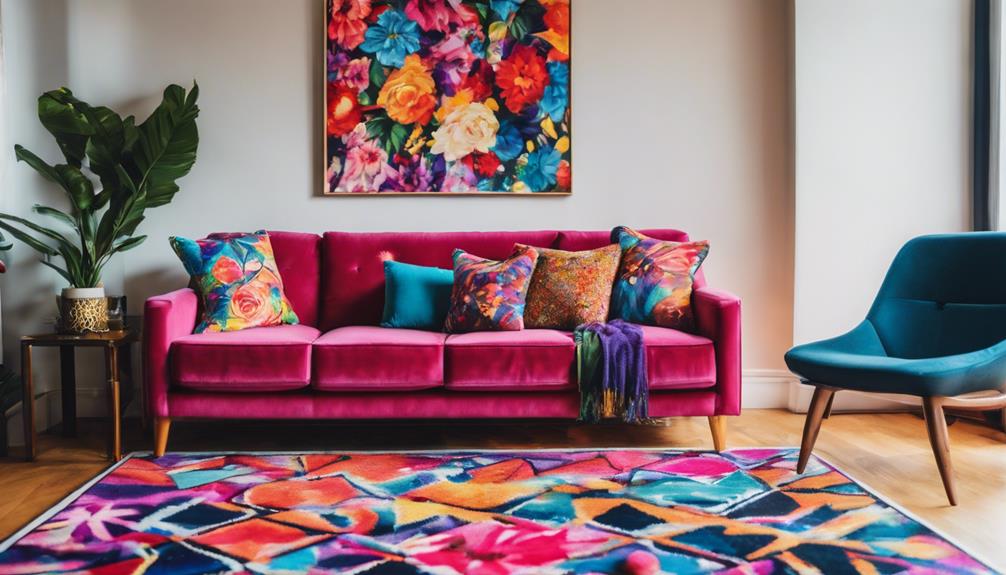In order to maintain balance in your home according to Feng Shui principles, focus on implementing five key strategies. Start by being mindful of your shopping habits and opt for high-quality items that promote tranquility and minimize clutter. When decorating your bedroom, choose calming artwork and avoid displaying family photos that may disrupt the intimacy of the space. Place mirrors strategically to avoid them facing the front door, as this can deplete positive energy. Regularly address home maintenance issues to cultivate peace and demonstrate your dedication to well-being. Additionally, check for leaks that could drain both energy and finances. By addressing these aspects, you will create a more harmonious environment that nurtures your soul. Furthermore, incorporating natural light and elements like plants can enhance the positive energy in your home. Simple changes such as decluttering entryways and clearing pathways can also contribute to achieving feng shui balance. Gradually integrating these practices will guide you toward a more balanced and serene living environment. Explore more about feng shui tips that you shouldn’t overlook here.
Key Takeaways
- Regularly check for and fix leaks to prevent financial drain and energy loss, maintaining a calm environment.
- Position mirrors to reflect positive imagery and avoid facing the front door to keep chi energy intact.
- Choose bedroom artwork that promotes tranquility and intimacy, avoiding emotionally charged images or family photos.
- Invest in high-quality, meaningful decor that enhances home aesthetics while reducing clutter for a serene atmosphere.
- Maintain consistent home upkeep to foster peace and mental stability, addressing small issues before they become larger problems.
Mindful Purchasing Habits

Mindful purchasing habits are essential for creating a harmonious living space. When you focus on acquiring high-quality items, such as a vibrant Indonesian decor mask, you not only enhance your home's aesthetics but also promote positive energy and energy flow. Each piece you choose should spark joy and serve a purpose, ensuring it contributes to home harmony.
By investing in fewer, well-selected items, you effectively reduce clutter, which can trap stagnant energy and disrupt the balance in your living environment. This decluttered approach makes maintenance easier and creates a serene atmosphere that supports your mental and emotional well-being.
Moreover, when you give gifts, opt for thoughtful, high-quality items over a collection of lesser-value products. This thoughtful selection reflects your care and adds to the recipient's positive energy. Regularly evaluating your purchases helps prevent unnecessary clutter from piling up, which can weigh you down emotionally.
Incorporating mindful purchasing into your routine aligns with the principles of Feng Shui, fostering a space that nourishes and revitalizes you. By being intentional about what you bring into your home, you'll cultivate a sanctuary that truly resonates with harmony.
Bedroom Photo Placement

When it comes to bedroom photo placement, it's crucial to choose images that foster intimacy and tranquility. In Feng Shui, the energy of your bedroom should promote restful sleep and a peaceful atmosphere.
To achieve this, eliminate photos of friends and family, as they can create distractions and disrupt the intimate energy of the space. Instead, focus on images of you and your partner or representations of the relationship you desire.
Additionally, consider incorporating elements of Indonesian Decorative Pillows to add vibrant colors and intricate patterns that enhance the overall ambiance.
Avoid placing pictures or artwork directly above the bed; this setup can negatively impact sleep quality and the overall energy in the room.
Your bedroom should be a serene environment, free from visual clutter that could overwhelm your senses. Opt for calming artwork that enhances tranquility, steering clear of pieces that evoke strong emotions or memories which might disturb your peace.
Mirror Positioning for Energy

The way you position mirrors in your home can markedly affect the energy flow, or chi, throughout your space.
Proper mirror placement is essential for maintaining positive energy in your home. To create a harmonious environment, contemplate incorporating natural materials and a calming color palette, as seen in Balinese design principles.
Here are some tips to contemplate:
- Avoid mirrors facing the front door: This can push chi energy back outside, disrupting the flow.
- Use side mirrors: These are acceptable as they won't obstruct energy flows when placed correctly.
- Reflect only positive imagery: Verify mirrors don't reflect clutter or negative images, as this amplifies stagnant energy.
- Cover mirrors when necessary: Use curtains or panels to prevent energy loss and redirect chi within your space.
Home Maintenance and Self-Care

Home maintenance plays an essential role in your overall self-care routine. When you regularly address small issues like replacing burnt-out light bulbs or fixing leaky faucets, you not only enhance the energy of your home but also reflect your commitment to your well-being.
Incorporating unique decor, such as Indonesian decor masks, can further enrich your space, adding cultural significance and aesthetic appeal. Neglecting these tasks can lead to clutter and broken items, which often mirror feelings of overwhelm and stress, disrupting the harmony and tranquility of your space.
Creating a nurturing environment through consistent upkeep fosters a sense of peace and contentment. A well-maintained home promotes positive energy flow, allowing you to feel more balanced and centered.
Each repair you make and every piece of clutter you clear contributes to a sense of order and stability, essential elements for your mental and emotional health.
Addressing Home Leaks

How often do you check for leaks in your home? If you're not doing it regularly, you might be inviting financial drain and energy loss into your life.
Addressing these leaks is crucial for fostering a balanced home and maintaining a harmonious living environment. Integrating natural elements into your home, much like the designs offered by luxury tropical design experts, can also enhance your space's tranquility.
Here's what to look for:
- Under sinks: Inspect for any signs of moisture or water stains.
- Around toilets: Check for leaks at the base or from the tank.
- Walls and ceilings: Look for water stains indicating hidden leaks.
- Basement and crawl spaces: Confirm there's no dampness or pooling water.
Timely repairs not only preserve your home's integrity but also create a calm environment, reducing the overwhelm associated with neglect.
Neglecting leaks can lead to a chaotic living space, disrupting your personal tranquility. By promptly addressing even minor issues, you can prevent larger, costly problems later on, confirming your home remains a balanced sanctuary.
Prioritizing these fixes will enhance your Feng Shui, allowing positive energy to flow freely in your harmonious home. By addressing any neglected areas, you’ll also be correcting common feng shui rule you’re breaking, such as cluttered doorways or blocked pathways that impede energy movement. A well-organized, balanced space invites peace, prosperity, and overall well-being into your life. Remember, small adjustments can yield profound improvements in the atmosphere of your home.
Frequently Asked Questions
What Are the 5 Elements of Feng Shui?
The five elements of Feng Shui are Wood, Fire, Earth, Metal, and Water. Each element brings unique energies, influencing your environment. Understanding their interactions helps you create a harmonious and balanced living space that enhances well-being.
How Do I Remove Bad Luck From My House Feng Shui?
Did you know that 80% of people feel more positive energy in decluttered spaces? To remove bad luck, clear clutter, fix leaks, create a welcoming entrance, avoid broken items, and enhance your home's energy flow.
What Is Bad Feng Shui for a House?
Bad feng shui for a house includes clutter at entrances, mirrors facing doors, aligned doors, beds in line with doors, and wilted plants. These issues block energy flow and create an unbalanced, unsettling atmosphere.
What Are the Destructive Elements in Feng Shui?
Destructive elements in feng shui include clutter near entrances, mirrors facing the door, poorly positioned beds, dead plants, and direct alignments of doors. These disrupt energy flow, leading to imbalance and a sense of overwhelm in your space.
Conclusion
By adopting mindful purchasing habits and carefully considering your home's layout, you can create a space that feels balanced and harmonious. Don't underestimate the power of small changes, like adjusting your mirror placement or fixing leaks, to enhance the flow of energy in your home. Remember, your environment reflects your well-being. So, take these steps to nurture your space, and you'll find that a little attention can lead to a lot of positive change.







